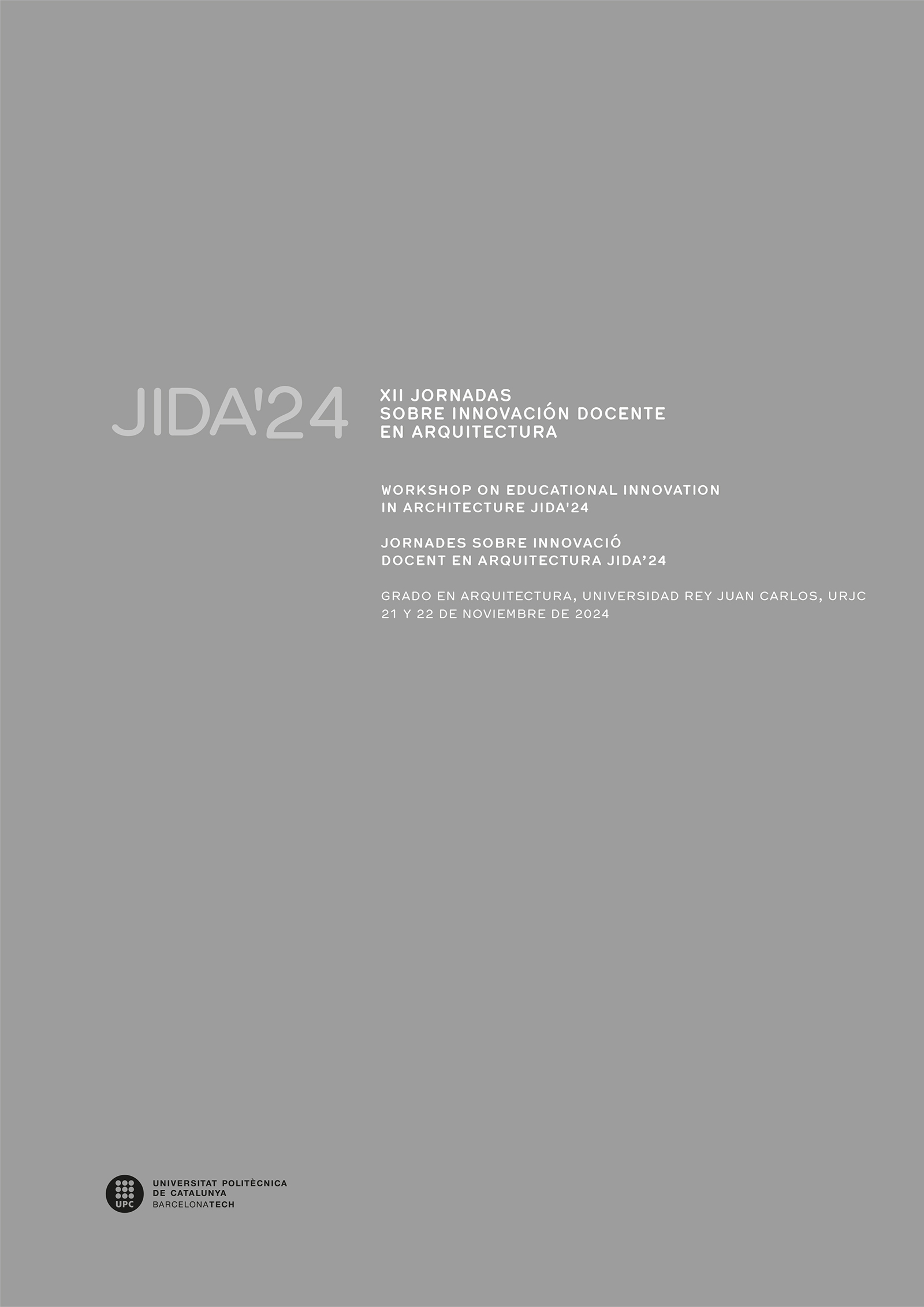Between imaginary and technique: graphic tools for conceptualizing landscapes
DOI:
https://doi.org/10.5821/jida.2024.13301Keywords:
landscape architecture, representation, ideation, projects, graphic communicationAbstract
From the study of the properties of moss to the creation of atmospheres with artificial intelligence, the first course in landscape design explores the relationship between graphic communication and project conceptualization. Starting with the translation of each student's individual imaginary to interdisciplinary references that extend the landscape and architectural field to the artistic or philosophical, the learning process begins with the abstraction of the first intuitions and their translation into a personal graphic language. How to represent the environment, to realize landscapes that trace the relationships of the living, the everyday, the experiential, the phenomenological or the invisible? These and other questions about the interpretation and definition of landscape were explored through a combination of analog and digital tools. Throughout the course, the reworking of concepts through different techniques turns the project into a non-linear process, growing as specialists through one's own skills.
References
Amann y Alcocer, Atxu. 2016. «Innovación en el aprendizaje arquitectónico de lo inútil, especulaciones: taller de acciones ligadas a proyectar». JIDA’16. IV Jornadas de Innovación Docente en Arquitectura, Universitat Politècnica de València.
Alba-Dorado, María Isabel. 2016. «Aprendiendo a pensar con las manos. Estrategias creativas de aprendizaje en Arquitectura». JIDA’16. IV Jornadas de Innovación Docente en Arquitectura, Universitat Politècnica de València.
ARQ. 2014. núm. esp. Smiljan Radic. Bestiario. Santiago de Chile: Pontificia Universidad Católica de Chile. p. 38.
Bachelard, Gaston. 1975. La poética del espacio. Madrid: Fondo de Cultura Económica.
Clément, Gilles. 2021. Jardines, paisaje y genio natural. Barcelona: Puente editores.
Cosgrove, Denis. 2002. «Observando la naturaleza: el paisaje y el sentido europeo de la vista». Boletín de la A.G.E (34): 63-89.
De Jorge-Huertas, Virginia y Ana Isabel Rodriguez-Aguilera. 2023. «Dibujar y cartografíar: un marco teórico para arquitectura y paisajismo». JIDA’23. IV Jornadas de Innovación Docente en Arquitectura, Universidad de Granada.
De Solá-Morales i Rubio, Ignasi. 2002. Territorios. Barcelona: GG.
Gálvez Pérez, María Auxiliadora. 2012. Descampados. Madrid: Ediciones asimétricas.
García, Elizabeth, Rafael González, y Marianela Camacho. 2009. «Imaginarios Posibles En La Arquitectura.». Encuentro Educacional, 16 (3): 452-472.
García-Cors, Josep. 2016. «Tecnología de la invención. Hacia una nuva tradición». JIDA’16. IV Jornadas de Innovación Docente en Arquitectura, Universitat Politècnica de València.
Haraway, Donna Jeanne. 1995. Ciencia, cyborgs y mujeres: la reinvención de la naturaleza. Universitat de València.
Heidegger, Martin. 2019. El origen de la obra de arte. España: Laoficina.
Lopes Cezar, Laura. 2014. «Las Fotocomposiciones De Enric Miralles». ARQUISUR Revista 3 (4):22-44.
Merleau-Ponty, Maurice. 1975. Fenomenología de la percepción. Barcelona: Península.
Miralles, Enric 1996. Enric Miralles. Obras y proyectos. Madrid: Electa España.
Pallasmaa, Juhani. 2014. La imagen corpórea. Imaginación e imaginario en la arquitectura. Barcelona: Editorial Gustavo Gili.
Sartre, Jean-Paul. 2006. La imaginación. Barcelona: Edhasa.
Soriano, Federico. 2015. “Hacia una definición de la planta profunda, anamórfica y fluctuante.” El Croquis. nº82.
Tuan, Yi-Fu. 1990. Topophilia: A Study of Environmental Perception, Attitudes, and Values. Columbia University Press.






















